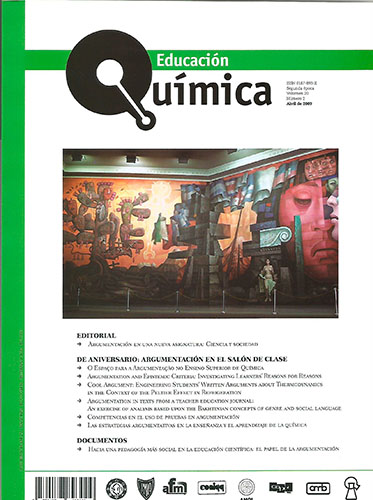Constructivism and Analytical Chemistry of Professor Gaston Charlot
Main Article Content
Abstract
The structure of analytical chemistry designed by Prof. Gaston Charlot in France, about 1940, begins with a very simple model of chemical reaction, understood as a process in which a donor gives only one kind of particles to an acceptor. When this model is assimilated by the student then the study of chemical reactions that exchange two or more type of particles is presented. Gradually the model incorporates the study of more and more complex reactions and processes, as precipitation, redox, non aqueous solvents, and separations, among others. This approach permits to plan and resolve complex problems of analytical and industrial chemistry. In the present work we show the analogies of the analytical chemistry proposed by G. Charlot and the principles of constructivism applied nowadays to the teaching of sciences.
Article Details
Citas en Dimensions Service

Educación Química por Universidad Nacional Autónoma de México se distribuye bajo una Licencia Creative Commons Atribución-NoComercial-SinDerivar 4.0 Internacional.
Basada en una obra en http://www.revistas.unam.mx/index.php/req.
